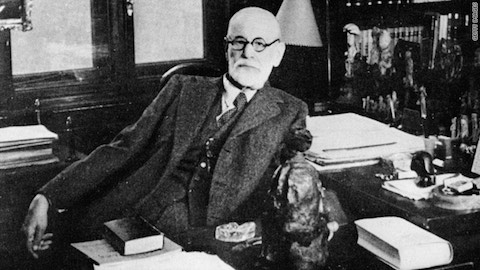How a Young Sigmund Freud Researched & Got Addicted to Cocaine

As David Bowie had his cocaine period, so too did Sigmund Freud, beginning in 1894 and lasting at least two years.
Unlike the rock star, the doctor was just at the beginning of his career, “a nervous fellow” of 28 “who wanted to make good,” says Howard Markel, author of An Anatomy of Addiction: Sigmund Freud, William Halsted, and the Miracle Drug Cocaine. Markel tells Ira Flatow in the NPR Science Friday episode below that Freud “knew if he was going to get a professorship, he would have to discover something great.”
Freud’s experiments with the drug led to the publication of a well-regarded paper called “Über Coca,” which he described as “a song of praise to this magical substance” in a “pretty racy” letter to his then-fiancé Martha Bernays. (He also promised she would be unable to resist the advances of: “a big, wild man who has cocaine in his body.”) Two years later, his health suffering, Freud apparently stopped all use of the drug and rarely mentioned it again.
Freud’s cocaine use began, in fact, with tragedy, “the anguished death of one of his dearest friends,” writes The New York Times in a review of Markel’s book:
[T]he accomplished young phsyiologist Ernst von Fleischl-Marxow, whose morphine addiction Freud had tried to treat with cocaine, with disastrous results. As Freud wrote almost three decades later, “the study on coca was an allotrion” — an idle pursuit that distracts from serious responsibilities — “which I was eager to conclude.”
The drug was at the time touted as a panacea, and Fleischl-Marxow, Markel says, was “the first addict in Europe to be treated with this new therapeutic.” Freud also used himself as a test subject, unaware of the addictive properties of his cure for his friend’s addiction and his own depression and reticence.
 Follow
Follow